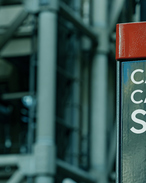This article is 8 years old. Images might not display.
With roughly 150 petajoules of remaining commitments relating to the Origin Energy contract versus Beach's 200PJ revised 2P gas reserves in the South Australian Cooper Basin Joint Venture, RBC Capital Markets said last week that it did not foresee a "meaningful threat" of contractual shortfalls, particularly given Beach has access to about 21% of 60PJ of stored gas in the Cooper Basin to call on in addition to its reserves.
However, RBC warned that Beach's upside to materially higher east coast gas pricing is "shrinking".
"This is something we have noted among AWE, Santos and now Beach - those who have previously been thought of as having the best positive exposure to East Coast gas have either had their resources reduced (AWE regarding BassGas) or are over contracted and negatively exposed to East Coast gas (Santos)," RBC's Ben Wilson wrote.
Citi's Australian head of energy research Dale Koenders said that while the east coast gas market was "a complicated beast", he conceded that Beach, Santos and AWE's exposure to that opportunity was going down.
However, he said it was important to remember that "a lot of that gas is going into contingent resource - it's not being lost, just going into a bucket where it's uncommercial under the current price deck".
He said the Cooper Basin historically used to be an asset that would add about 150 billion cubic feet of gross reserves per annum until about 2010 before underperforming wells and reduced oil prices caused reserves downgrades.
Now that's largely played out, Koenders believes there are some positive stories to come on the Cooper Basin.
"My understanding from talking to Beach is the positive exploration success that they realised in 2016 is yet to be booked in reserves," he told Energy News.
Thus some more of the discovered gas resource which is being treated as contingent will most likely become commercial and return to reserves category in the next 12 months, which means some reserve growth is on the cards for Beach, Santos and Origin Energy.
Citi estimated in a recent note that this could add 50-100Bcf.
Beach also said Moomba South was being de-risked through 2015-16. Moomba South was a low-pressure gas field Santos spoke about on its 2014 site trip, saying it could see one trillion cubic feet of gas growth unlocked if it can de-risk under-pressure drilling and low-pressure completion.
Then there is further exploration that will continue in the basin longer-term.
Santos CEO Kevin Gallagher recently flagged a return to exploration as part of his organic growth strategy.
All of this leads Koenders, a petroleum engineer, to believe there is reserve growth in the Cooper Basin in the medium-term.
Less sanguine
While Slugcatcher had some optimism for Beach in light of Credit Suisse's scathing comments on the east coast gas market on Monday, independent analyst Peter Strachan was less optimistic.
"The Slug points to a looming east coast gas nightmare whilst pumping up Beach Energy's options. Let's hope that the stock performs better than over the last two years, when total losses amounted to $1.34 billion, or even over the past nine years since the GFC, when losses of $380 million accumulated," Strachan told Energy News.
"Over the short-term with LNG pricing at levels below $US7.50/GJ, Australia's east coast gas market might find some supply escaping from the massive, loss making LNG cluster that is Curtis Island, as plants operate on half-time or are mothballed.
"Longer term, there is still a lot of gas in the Otway, where Beach has a presence with 3D Oil, and poor old Origin Energy appears to be cranking up to drill with its hapless partner AWE on VIC-P-44."
Scathing
While upstream companies and analysts debate how best to capitalise on the east coast gas crisis, midstream player APA believes it's all in their heads.
"One thing does appear to be certain ... We are all finally in agreement that there is sufficient gas forecast to be produced to satisfy both LNG and domestic demand which is good news for consumers," APA's chief executive strategy and development Ross Gersbach told analysts on the pipeline owner's August 24 earnings call.
"So there was no gas crisis after all, which is what APA had said all along.
"That is predicated on forecast production, coming online, and, one would assume, on the ability for gas to get to market.
"That's where the pipeline industry has a crucial role to play. Pipeline infrastructure is critical to increasing gas supply and increased gas supply would put downward pressure on prices."
Credit Suisse ripped into APA for that analysis, saying that, to the contrary, things are only likely to get worse, and in some ways echoed Strachan's concerns over the Gladstone LNG megaprojects.
"With no new volumes sanctioned (or close), large reserve downgrades in the past 18 months, a paucity of capital amongst resource owners, potential upstream challenges at GLNG and other assets, the situation couldn't be more critical," the bank said.
Credit Suisse believes the annual shortage could be between 120-300PJ by 2019-20.
"There isn't enough information, nor a crystal ball on corporate behaviour (and) well performance, to definitively pin down the supply shortage," the bank said.
"However, updating our views on both supply and demand, we believe that the east coast of Australia, all else equal, could be short 120-300PJa by 2019-20. By its very definition all else can't be equal, so supply and/or demand will need to adjust.
"We remain frustrated by this view that gas in the ground (there is plenty) magically gets delivered by the capital tooth fairy in time to meet demand."
Credit Suisse estimate that to catch up the missing supply Australia would need at least $2.5-6.75 billion of upfront capital.
"On top of that, through cycle to sustain 750PJa supply for the domestic market (and 3rd party for LNG) a further A$3-5 billion pa is needed (assuming $4-6.5/GJ finding and development costs, which could be generous)," the bank said.
"We don't get data for all suppliers, but it is unlikely even $1 billion/year (ex-LNG) is currently spent in total."






















